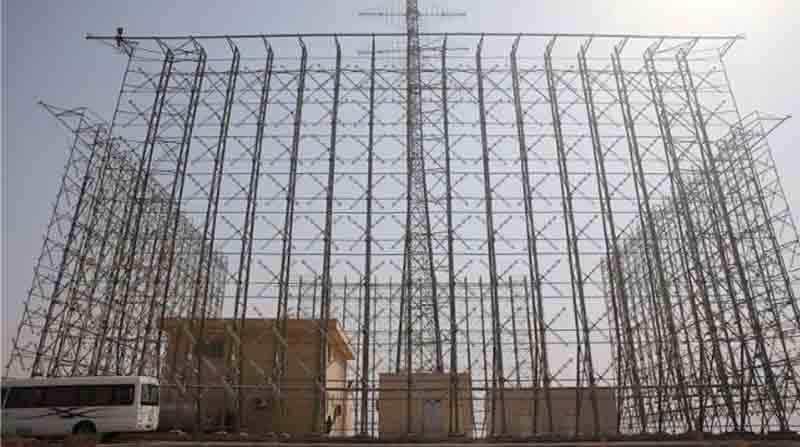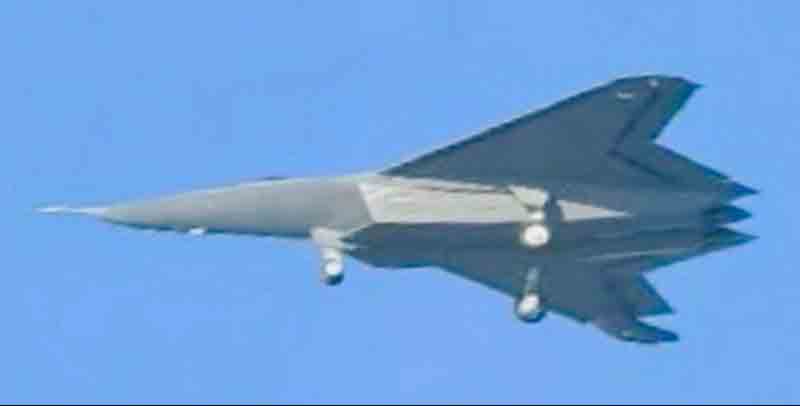For the first time, the People’s Liberation Army Air Force (PLAAF) of China has utilized its H-6K bomber equipped with the air-launched ballistic missile (ALBM) KD-21 during a live military exercise. This development highlights a significant shift in Beijing’s strategic calculations regarding threats to U.S. and allied forces in the Indo-Pacific region.
Recent satellite images and ground photographs have shown an H-6K bomber from the prestigious 10th Bomber Division carrying two KD-21 ALBMs beneath its wings, signaling that this powerful weapon has achieved operational readiness and is being strategically positioned near potential conflict zones.
While the H-6K is capable of carrying up to four KD-21 missiles, the deployment of two on a single mission represents a pivotal moment, indicating China’s preparedness to utilize this system in frontline scenarios since its public introduction at the Zhuhai Air Show in 2022.
This action reflects Beijing’s rapid advancements in long-range precision strike capabilities, particularly in its ability to exert influence deep into contested maritime areas. The KD-21, measuring approximately 7 meters in length, 0.76 meters in diameter, and weighing around 2 tonnes, is believed to be equipped with a deep-penetration warhead designed to target fortified underground facilities and command centers, both at sea and on land.
Powered by a solid-fuel rocket motor, the missile has an operational range exceeding 1,000 kilometers, extending China’s strategic reach beyond the first island chain and into U.S. military bases such as Guam.
Its guidance system is thought to feature an active radar seeker combined with synthetic aperture radar (SAR) technology, providing the KD-21 with a high level of precision for engaging both moving naval targets and stationary ground installations.
The operational integration of the H-6K bomber with the KD-21 anti-ship ballistic missile (ASBM) signifies a blend of Soviet-era strategic aviation principles and contemporary Chinese missile technology, combining traditional endurance with advanced lethality.
Before this initiative, there had been no documented cases of H-6K bombers being outfitted with the KD-21 for training or operational purposes, highlighting the importance of this advancement for military strategists in the region.
Known as the “carrier killer,” the KD-21 adds a significant new threat to U.S., Japanese, and allied naval forces operating in the South China Sea, East China Sea, and adjacent areas. Its classification as an ASBM indicates a deliberate strategy to contest U.S. naval supremacy, particularly targeting the strategic mobility and deterrent capabilities of aircraft carrier strike groups in the Pacific.
What distinguishes the KD-21 is its dual-capability design, allowing it to effectively target both maritime and high-value land objectives with precision, thereby complicating the strategic landscape for U.S. forces in the area. This versatility directly threatens American military installations throughout the Indo-Pacific, including key sites like Andersen Air Force Base in Guam and forward bases in Japan, the Philippines, and the Marianas.
The KD-21 is thought to be part of a larger suite of ALBMs being developed by the People’s Liberation Army, each tailored for specific missions within China’s increasingly advanced anti-access/area-denial (A2/AD) framework. Military experts believe that China’s strategy of diversifying ALBM platforms aims to saturate and overwhelm missile defense systems while simultaneously restricting adversaries’ operational freedom in contested zones.
The operational introduction of the KD-21, whether designed primarily for land assaults, maritime strikes, or both, marks a significant advancement in China’s strategic airpower capabilities, with substantial implications for the security dynamics in the region.
Air-launched ballistic missiles (ALBMs) like the KD-21 are particularly challenging to intercept due to their high terminal velocities, erratic flight paths, and steep angles of attack. During their final approach, these missiles often reach hypersonic or near-hypersonic speeds, arriving at sharp angles that pose a serious challenge to even the most sophisticated missile defense systems, such as THAAD or Aegis.
Adding to the interception challenge is the KD-21’s reported capability to execute evasive maneuvers in the terminal phase, which enhances its chances of evading kinetic interceptors.
From a military strategy standpoint, China’s capacity to launch ALBMs from airborne platforms allows for rapid, large-scale deployment from unexpected directions, complicating the enemy’s ability to detect and respond to threats.
Chinese military doctrine increasingly envisions integrated strike packages that combine ALBMs like the KD-21 with cruise missiles, decoys, and suicide drones, aiming to saturate and overwhelm enemy defenses through coordinated multi-domain attacks.
While China already possesses the largest stockpile of ground-launched ballistic missiles globally, the airborne launch capability provided by the H-6K significantly boosts Beijing’s ability to project power far beyond its coastal boundaries in a flexible and unpredictable manner.
This development extends the reach of the People’s Liberation Army Air Force (PLAAF) into regions previously considered out of range, effectively eliminating traditional buffer zones that once safeguarded American assets and regional allies. The H-6K bomber, now equipped with the KD-21, is part of the PLAAF’s 10th Bomber Division, one of the oldest and most esteemed units in China’s military aviation history.
Established on January 17, 1951, the division initially included the 28th, 29th, and 30th Bomber Regiments and has since received honors such as “Model Bomber Group” and “Red Banner Division” for its contributions to various critical missions.
Currently, it functions under the Eastern Theater Command Air Force, tasked with operations over the East China Sea and the increasingly tense Taiwan Strait. Its main base is situated at Anqing Air Base in Anhui Province, with additional support from Luhe Air Base in Jiangsu Province, strategically positioning it near potential conflict zones.
The integration of the H-6K with the KD-21 signifies a significant advancement in China’s strategic bomber capabilities, evolving from a relic of Cold War deterrence to a contemporary precision-strike asset that can influence the Indo-Pacific operational landscape in favor of Beijing.
As tensions rise regarding Taiwan, the South China Sea, and freedom of navigation initiatives, the H-6K/KD-21 combination has the potential to alter the strategic balance by challenging U.S. military presence and naval dominance in the area.
By deploying a missile designed to penetrate fortified structures and evade sophisticated missile defense systems, China is demonstrating its capability to deter, delay, or counteract interventions by superior naval forces in future scenarios.
In summary, the H-6K and KD-21 partnership not only represents a significant technological advancement but also serves as a geopolitical declaration—highlighting Beijing’s increasing readiness to utilize long-range precision strike capabilities as a fundamental aspect of its strategic deterrent.
Discover more from Defence Talks | Defense News Hub, Military Updates, Security Insights
Subscribe to get the latest posts sent to your email.





